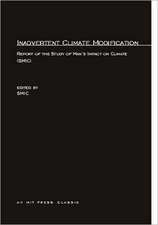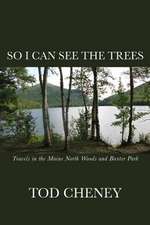Plants Have So Much to Give Us, All We Have to Do Is Ask: Anishinaabe Botanical Teachings
Autor Mary Siisip Geniusz Editat de Wendy Makoons Geniusz Ilustrat de Annmarie Geniuszen Limba Engleză Paperback – 22 iun 2015
Mary Siisip Geniusz has spent more than thirty years working with, living with, and using the Anishinaabe teachings, recipes, and botanical information she shares in Plants Have So Much to Give Us, All We Have to Do Is Ask. Geniusz gained much of the knowledge she writes about from her years as an oshkaabewis, a traditionally trained apprentice, and as friend to the late Keewaydinoquay, an Anishinaabe medicine woman from the Leelanau Peninsula in Michigan and a scholar, teacher, and practitioner in the field of native ethnobotany. Keewaydinoquay published little in her lifetime, yet Geniusz has carried on her legacy by making this body of knowledge accessible to a broader audience.
Geniusz teaches the ways she was taught—through stories. Sharing the traditional stories she learned at Keewaydinoquay’s side as well as stories from other American Indian traditions and her own experiences, Geniusz brings the plants to life with narratives that explain their uses, meaning, and history. Stories such as “Naanabozho and the Squeaky-Voice Plant” place the plants in cultural context and illustrate the belief in plants as cognizant beings. Covering a wide range of plants, from conifers to cattails to medicinal uses of yarrow, mullein, and dandelion, she explains how we can work with those beings to create food, simple medicines, and practical botanical tools.
Plants Have So Much to Give Us, All We Have to Do Is Ask makes this botanical information useful to native and nonnative healers and educators and places it in the context of the Anishinaabe culture that developed the knowledge and practice.
Geniusz teaches the ways she was taught—through stories. Sharing the traditional stories she learned at Keewaydinoquay’s side as well as stories from other American Indian traditions and her own experiences, Geniusz brings the plants to life with narratives that explain their uses, meaning, and history. Stories such as “Naanabozho and the Squeaky-Voice Plant” place the plants in cultural context and illustrate the belief in plants as cognizant beings. Covering a wide range of plants, from conifers to cattails to medicinal uses of yarrow, mullein, and dandelion, she explains how we can work with those beings to create food, simple medicines, and practical botanical tools.
Plants Have So Much to Give Us, All We Have to Do Is Ask makes this botanical information useful to native and nonnative healers and educators and places it in the context of the Anishinaabe culture that developed the knowledge and practice.
Preț: 139.18 lei
Nou
Puncte Express: 209
Preț estimativ în valută:
26.63€ • 27.64$ • 22.26£
26.63€ • 27.64$ • 22.26£
Carte disponibilă
Livrare economică 22 februarie-08 martie
Livrare express 11-15 februarie pentru 42.02 lei
Preluare comenzi: 021 569.72.76
Specificații
ISBN-13: 9780816696765
ISBN-10: 0816696764
Pagini: 344
Ilustrații: 37
Dimensiuni: 178 x 254 x 23 mm
Greutate: 0.67 kg
Ediția:1
Editura: University of Minnesota Press
Colecția Univ Of Minnesota Press
ISBN-10: 0816696764
Pagini: 344
Ilustrații: 37
Dimensiuni: 178 x 254 x 23 mm
Greutate: 0.67 kg
Ediția:1
Editura: University of Minnesota Press
Colecția Univ Of Minnesota Press
Notă biografică
Mary Siisip Geniusz (1948–2016) was of Cree and Métis descent and a member of the Bear Clan. She worked as an oshkaabewis (a traditional Anishinaabe apprentice)
with the late Keewaydinoquay, an Anishinaabe medicine woman and ethnobotanist from Michigan. She taught ethnobotany, American Indian studies, and American multicultural studies at the University of Wisconsin–Milwaukee, University of Wisconsin–Eau Claire, and Minnesota State University-Moorhead.
Wendy Makoons Geniusz is of Cree and Métis descent. She is assistant professor in the Department of Languages at the University of Wisconsin–Eau Claire, where she teaches Ojibwe language courses.
with the late Keewaydinoquay, an Anishinaabe medicine woman and ethnobotanist from Michigan. She taught ethnobotany, American Indian studies, and American multicultural studies at the University of Wisconsin–Milwaukee, University of Wisconsin–Eau Claire, and Minnesota State University-Moorhead.
Wendy Makoons Geniusz is of Cree and Métis descent. She is assistant professor in the Department of Languages at the University of Wisconsin–Eau Claire, where she teaches Ojibwe language courses.
Cuprins
Contents
Foreword
Wendy Makoons Geniusz
Introduction
A Note on Botanical Usage
Invocation
1. Traditional Anishinaabe Teaching About Plants
“The Year the Roses Died”
The Primacy of Plants
How do We Know This, or the Descent of Our Knowledge?
Talking to Plants
Indigenous or Imported?
The Use of Story in Ethnobotany
2. Indinawemaaganag: All of My Relatives
“How Cedar Came into the World: The Creation Story of Cedar and Bearberry”
“Nookomis Giizhik: The Cedar Song”
White Cedar, Nokomis Giizhik, Thuja occidentalis
Traditional Anishinaabe Advice to Youth
“The Lady of the Red and Black Wigwam”
Cedar Medicines
“The Birch Tree, the Maple Tree, and Nanaboozhoo”
Paper Birch, Nimishoomis Wiigwaas, Betula papyrifera
“Nanaboozhoo and the Thunderbirds”
“The Runner and the Birch Sap”
Balsam fir, Nimisenh, Abies balsamea
3. Other Conifers Important to the Anishinaabeg
“Why Some Trees Keep Their Leaves When Others do Not”
“Nanaboozhoo and Paul Bunyan”
The Pines, Tacobeshig, Pinus spp.
White Pine, Zhingwaak, Pinus strobus
Red Pine, Apakwanagemag, Pinus resinosa
Jack Pine, Wakikaandag, Pinus banksiana
Scotch Pine, Pinus sylvestris
Medicinal Virtues of the Pines
Foot Baths
Inhalants from Pines
Spruce, Gaawaandag, Picea mariana and Picea glauca
The Virtues of Spruce
The Ancient Warrior
Tamarack, Mashkiigmitig, Larix laricina
The Medicinal Virtues of Tamarack
Eastern Hemlock, Gaagaagiwanzh, Tsuga canadensis
Juniper, Juniperus horizontalis,Juniperus communis, and Juniperus virginiana
4. Three Food Plants that have been Very Useful to the Anishinaabeg
“Nanaboozhoo and the Dancing Men”
Cattail, Apakweshkway, Typha latifolia and Typha angustifolia
Labrador Tea, Mashkiigobag, Ledum groenlandicum
Jerusalem Artichokes, Giizisoojiibik, Helianthus tuberosus
5. Four Plants that the Anishinaabeg have Used in the Traditional, Material Culture
“The Shut-eye Dance: The Creation of Red Osier, Bittersweet, and Lichens”
The Cornus Family
Red Osier, Miskwaabiimizh, Cornus stolonifera
Bunchberry, Ode’iminijiibik, Cornus canadensis
Staghorn Sumac, Baakwaanaatig, Rhus typhina
Sphagnum Moss, Aasaakamig, Sphagnum spp.
“Nanaboozhoo and the Squeaky–Voice Plant”
Nanaboozhoo’s Squeaky–Voice Plant: Lycopodium, Lycopodium spp.
6. Major Medicinal Plants that have Shared Their Virtues with the Anishinaabeg
Yarrow, Waabanoganzh, Achillea millefolium
Mullein, Nookaadiziganzh, Verbascum thapsus
“The South Wind and the Maiden of the Golden Hair”
Dandelion, Doodooshaaboojiibik, Taraxacum officinale
Plantain, Omakakiibag, Plantago major and Plantago lanceolata
Roses, Oginiiminagaawanzh, Rosa spp.
The Eupatoriums
Joe Pye Weed, Bagizowin, Eupatorium purpureum
Shield and Lance Plant, Boneset, Eupatorium perfoliatum and Eupatorium rugosum
Jewelweed, Ozaawashkojiibik, Impatiens capensis,Impatiens pallida, and Poison Ivy, Animikiibag, Toxicodendron radicans
The Monarda Family
Wild Bergamot, “Baby Saver Plant”, Monarda fistulosa
Bee Balm, Aamoogaawanzh, Monarda didyma
Goldthread, Ozaawijiibik, Coptis groenlandica
Violets, Waawiyebag, Viola spp.
“Nanaboozhoo and Name”
The
Foreword
Wendy Makoons Geniusz
Introduction
A Note on Botanical Usage
Invocation
1. Traditional Anishinaabe Teaching About Plants
“The Year the Roses Died”
The Primacy of Plants
How do We Know This, or the Descent of Our Knowledge?
Talking to Plants
Indigenous or Imported?
The Use of Story in Ethnobotany
2. Indinawemaaganag: All of My Relatives
“How Cedar Came into the World: The Creation Story of Cedar and Bearberry”
“Nookomis Giizhik: The Cedar Song”
White Cedar, Nokomis Giizhik, Thuja occidentalis
Traditional Anishinaabe Advice to Youth
“The Lady of the Red and Black Wigwam”
Cedar Medicines
“The Birch Tree, the Maple Tree, and Nanaboozhoo”
Paper Birch, Nimishoomis Wiigwaas, Betula papyrifera
“Nanaboozhoo and the Thunderbirds”
“The Runner and the Birch Sap”
Balsam fir, Nimisenh, Abies balsamea
3. Other Conifers Important to the Anishinaabeg
“Why Some Trees Keep Their Leaves When Others do Not”
“Nanaboozhoo and Paul Bunyan”
The Pines, Tacobeshig, Pinus spp.
White Pine, Zhingwaak, Pinus strobus
Red Pine, Apakwanagemag, Pinus resinosa
Jack Pine, Wakikaandag, Pinus banksiana
Scotch Pine, Pinus sylvestris
Medicinal Virtues of the Pines
Foot Baths
Inhalants from Pines
Spruce, Gaawaandag, Picea mariana and Picea glauca
The Virtues of Spruce
The Ancient Warrior
Tamarack, Mashkiigmitig, Larix laricina
The Medicinal Virtues of Tamarack
Eastern Hemlock, Gaagaagiwanzh, Tsuga canadensis
Juniper, Juniperus horizontalis,Juniperus communis, and Juniperus virginiana
4. Three Food Plants that have been Very Useful to the Anishinaabeg
“Nanaboozhoo and the Dancing Men”
Cattail, Apakweshkway, Typha latifolia and Typha angustifolia
Labrador Tea, Mashkiigobag, Ledum groenlandicum
Jerusalem Artichokes, Giizisoojiibik, Helianthus tuberosus
5. Four Plants that the Anishinaabeg have Used in the Traditional, Material Culture
“The Shut-eye Dance: The Creation of Red Osier, Bittersweet, and Lichens”
The Cornus Family
Red Osier, Miskwaabiimizh, Cornus stolonifera
Bunchberry, Ode’iminijiibik, Cornus canadensis
Staghorn Sumac, Baakwaanaatig, Rhus typhina
Sphagnum Moss, Aasaakamig, Sphagnum spp.
“Nanaboozhoo and the Squeaky–Voice Plant”
Nanaboozhoo’s Squeaky–Voice Plant: Lycopodium, Lycopodium spp.
6. Major Medicinal Plants that have Shared Their Virtues with the Anishinaabeg
Yarrow, Waabanoganzh, Achillea millefolium
Mullein, Nookaadiziganzh, Verbascum thapsus
“The South Wind and the Maiden of the Golden Hair”
Dandelion, Doodooshaaboojiibik, Taraxacum officinale
Plantain, Omakakiibag, Plantago major and Plantago lanceolata
Roses, Oginiiminagaawanzh, Rosa spp.
The Eupatoriums
Joe Pye Weed, Bagizowin, Eupatorium purpureum
Shield and Lance Plant, Boneset, Eupatorium perfoliatum and Eupatorium rugosum
Jewelweed, Ozaawashkojiibik, Impatiens capensis,Impatiens pallida, and Poison Ivy, Animikiibag, Toxicodendron radicans
The Monarda Family
Wild Bergamot, “Baby Saver Plant”, Monarda fistulosa
Bee Balm, Aamoogaawanzh, Monarda didyma
Goldthread, Ozaawijiibik, Coptis groenlandica
Violets, Waawiyebag, Viola spp.
“Nanaboozhoo and Name”
The


















